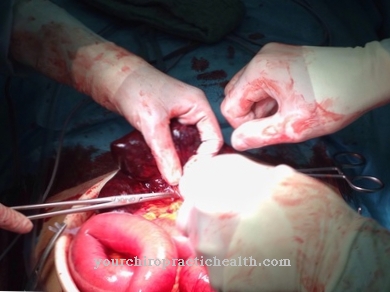Brackets (English: brackets) is a term used in orthodontics. These are fastening elements for fixed braces, which have the shape of small plates / knobs and are used to regulate the teeth.
What are brackets?

More and more people today have their teeth straightened. In the past it was almost only teenagers, today there are also many adults in their 40s who are looking for the most optically elegant correction solution possible.
Orthodontists now have a wide range of different systems that are as invisible as possible and ensure a more beautiful smile. After all, it was stars like Tom Cruise or Faye Dunaway who showed that a few years ago Brackets have also become socially acceptable for adults. Such “dental appliances” were first mentioned in France in 1728.
In 1916, three-dimensional regulation of the teeth became possible for the first time. This technique served as the basis for the modern brackets. Today there are brackets in many different designs: The visually striking metal braces of the past have long had "competition" from transparent materials.
Shapes, types & types
Standard brackets are usually made of stainless steel. Brackets made of metal have the advantage that they are extremely robust. They are available in very different sizes - full size brackets or speed brackets - and quality.
However, due to their nickel content, brackets are now increasingly made from other materials. Example: Ceramic brackets - due to their transparency, they are very inconspicuous and are often used by adults. If it is a question of inconspicuousness, brackets can also be bonded to the inside of the teeth, then they are called lingual brackets, in contrast to the brackets on the outside, which are called buccal brackets.
Ceramic and metal brackets can - for cost reasons - also be combined perfectly, for example. Other materials are gold, titanium or composite.
Structure, function & mode of operation
Brackets are glued directly to the teeth with a special adhesive technique and connected with continuous wires (arches). These arches made of elastic metal run through a horizontal slot (lock / slot) on the back of the brackets.
The fixed attachment of the braces permanently exerts pressure on the teeth, through which the tooth position can be corrected. Strictly speaking, the brackets are little "technical miracles": The strength and shape of the elastic metal arch determine the position in which the teeth should be later. A standard bracket has two wings that are used to attach the arch and is called a twin bracket. Sometimes brackets with only one wing are used, these are called single brackets.
Self-ligating brackets are used when additional rubbers or metal ligatures are not used to integrate the metal arches. Self-ligating brackets have the advantage that they considerably reduce the friction when moving the teeth. So that the treatment is as painless as possible, thermoelastic arches are also used today. They have a precisely defined force specification and are particularly flexible.
You can find your medication here
➔ Toothache medicationMedical & health benefits
If the dentist finds that the bite of the upper and lower jaw does not match, then the time for braces usually begins for teenagers. And later, when, for example, individual teeth are crooked or there is an unattractive gap between two teeth, adults also like to use orthodontic measures - in this case for cosmetic correction.
There is a choice between fixed and removable braces. The advantage of fixed braces - called brackets - is that the correction of the tooth position is much faster than with a removable version. Treatment with fixed braces can also be optimized in terms of time if not pre-made, but customized arches are used. The sometimes annoying pulling can be significantly reduced, for example by using self-ligating brackets.
In terms of aesthetics too, great strides have been made with brackets. Both brackets and arches are now made from materials that are almost invisible. The braces can also be attached to the inside of the teeth. In particular, the small brackets - called speed brackets - also help to make the correction as optically inconspicuous as possible.
























.jpg)



